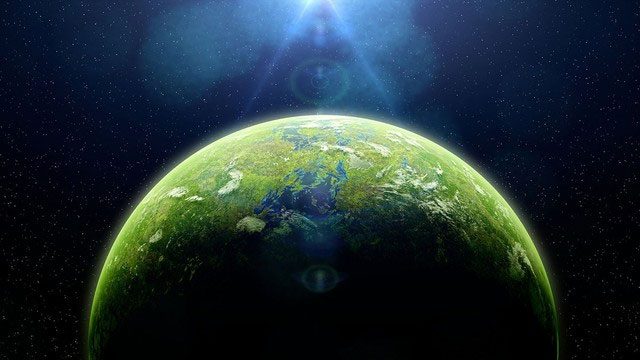Throughout human history, there have always been mysteries that challenge our imagination. Scientific knowledge illuminates the boundaries of understanding, yet beyond this light, there remain unknown realms waiting for us to explore.
In recent years, some scholars have proposed an intriguing hypothesis: the mysterious extraterrestrial visitors may not come from distant galaxies but rather are products of Earth itself—ancient Earth inhabitants. These ancient Earth dwellers possessed technology far beyond our own. At some pivotal moment in Earth’s history, they foresaw a catastrophic disaster. To survive, they had to abandon their homeland and embark on a long journey to escape this impending doom.
However, despite becoming wanderers in the universe, they did not forget to return to Earth frequently to check in and observe the changes on this planet. This hypothesis may sound like the plot of a science fiction novel, but when looking at recent archaeological discoveries, it seems we need to rethink this possibility.

Scientists believe that extraterrestrials are actually ancient Earth inhabitants. (Illustrative image).
Archaeologists have unearthed incredible remnants of prehistoric civilizations around the globe. From a 300-million-year-old screw to a 2-billion-year-old nuclear reactor, these discoveries challenge our understanding of Earth’s early history. Of course, we cannot draw conclusions based solely on a few unusual archaeological finds. Yet, as these discoveries accumulate and form a pattern, it becomes essential to reconsider everything.
When it comes to records of prehistoric civilizations, perhaps the most widely circulated is the “Prophecies of the Maya”. According to the Maya prophecies, our current civilization marks the fifth Sun era of Earth. In other words, before our existence, Earth underwent four extinction events, and all civilizations in the four previous Sun eras were obliterated by disasters.
This raises the suspicion that the civilizations that once existed on Earth may far exceed the few documented in the Maya prophecies, and there could be many ancient civilizations still hidden from our understanding.

Earth has experienced five mass extinctions, even after the dinosaurs went extinct. (Illustrative image).
In the 4.6 billion-year history of Earth, five mass extinctions have occurred, and even after the dinosaurs vanished, chaos continued on Earth. Over tens of millions of years, Earth has experienced numerous ice ages, volcanic eruptions, and a series of asteroid impacts, any of which could have catastrophic effects on life.
As Earth faced irreversible environmental changes, intelligent life was forced to seek new habitats, making the abandonment of their homeland an inevitable choice. Consequently, the expansion of intelligent life from Earth to other planets became imperative.
The renowned physicist Stephen Hawking repeatedly warned humanity throughout his life that if we wish to escape a destructive fate, we must find ways to migrate to other planets; otherwise, human extinction on Earth is unavoidable. Currently, humanity is striving to colonize Mars with hopes of establishing a new home there. This raises an intriguing question: Did any advanced civilization leave Earth before modern humans appeared?

Human civilization is just a recent moment. (Illustrative image).
If the 4.6 billion-year history of Earth were condensed into a single day, the emergence of Homo sapiens would occur in the final few minutes. Human civilization is merely a recent moment. We have come to believe that human civilization is the only intelligent civilization on Earth because we have found no evidence of intelligent life older than humans. Yet this perception may be misleading.
Regardless of how advanced an intelligent civilization may become, as long as their buildings, machinery, and infrastructure are made from earthly materials, they will eventually collapse, rust, erode, and be consumed by nature. Even the greatest civilizations are merely drops in the ocean compared to Earth’s geological evolutionary history.
The Negev Desert, the oldest terrain remaining on Earth, is only 1.8 million years old. Over time, the shifting of tectonic plates turns land into oceans and oceans into mountains. Even if traces of civilization remain outside Earth, such as on the Moon or other celestial bodies, those traces will eventually disappear over time. Take the Moon, for example; although it is not eroded by wind and water, the footprints and equipment left by the Apollo missions will gradually erode due to the Sun’s ultraviolet radiation and meteoroid impacts.
Dinosaurs existed on Earth for 200 million years, yet to date, humans have only unearthed a limited number of dinosaur fossils. In comparison, humans have a very short lifespan relative to Earth’s history. Even if intelligent beings in the future were to discover human fossils, they might only consider humans to be an ordinary primate species.
Similarly, other forms of intelligent life that may have existed in the past would have also had brief existences in geological history and likely left behind a limited number of biological fossils. Even if humans were to encounter some of them, they might not pay much attention.

This human-caused anomaly is the clearest mark we leave for the future. (Illustrative image).
Some scholars believe that “chemical fingerprints” could indirectly prove the existence of advanced civilizations. One of the most significant traces humanity leaves behind is the carbon emissions produced by industrial civilization, leading to global greenhouse effects. This unusual global event caused by human activity is the clearest mark we leave for the future.
So, did a similar situation exist on Earth before modern civilization? Evidence of some extreme climatic phenomena has indeed been found throughout Earth’s long history. One such phenomenon is the Paleocene-Eocene Thermal Maximum, occurring about 55.5 million years ago. The average temperature of Earth rose by 5 to 8 degrees Celsius over a relatively short period. Scientists believe this could relate to the massive amounts of carbon released into the atmosphere, showing striking similarities to today’s climate change caused by human activity.
Moreover, some hypotheses suggest that our ancestors may not have been the only intelligent species. Some archaeologists and researchers propose that there might have existed an unknown advanced civilization on Earth that possessed technology far beyond what we know. At some turning point in Earth’s history, they had to leave their homeland, and despite migrating to another habitable planet, they did not forget to return to Earth frequently. Mysterious remnants and UFO sightings around the world seem to hint at their existence.


















































